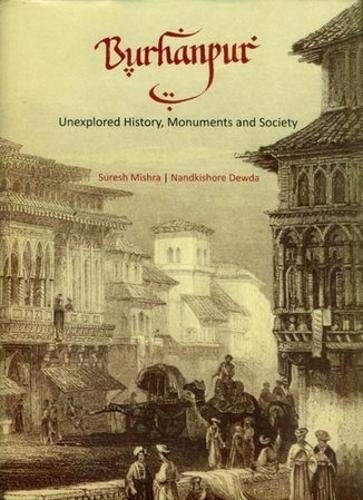dewda nandkishore mishra suresh (7 Ergebnisse)
FeedbackSuchfilter
Produktart
- Alle Product Types
- Bücher (7)
- Magazine & Zeitschriften (Keine weiteren Ergebnisse entsprechen dieser Verfeinerung)
- Comics (Keine weiteren Ergebnisse entsprechen dieser Verfeinerung)
- Noten (Keine weiteren Ergebnisse entsprechen dieser Verfeinerung)
- Kunst, Grafik & Poster (Keine weiteren Ergebnisse entsprechen dieser Verfeinerung)
- Fotografien (Keine weiteren Ergebnisse entsprechen dieser Verfeinerung)
- Karten (Keine weiteren Ergebnisse entsprechen dieser Verfeinerung)
- Manuskripte & Papierantiquitäten (Keine weiteren Ergebnisse entsprechen dieser Verfeinerung)
Zustand Mehr dazu
- Neu (7)
- Wie Neu, Sehr Gut oder Gut Bis Sehr Gut (Keine weiteren Ergebnisse entsprechen dieser Verfeinerung)
- Gut oder Befriedigend (Keine weiteren Ergebnisse entsprechen dieser Verfeinerung)
- Ausreichend oder Schlecht (Keine weiteren Ergebnisse entsprechen dieser Verfeinerung)
- Wie beschrieben (Keine weiteren Ergebnisse entsprechen dieser Verfeinerung)
Einband
- alle Einbände
- Hardcover (6)
- Softcover (Keine weiteren Ergebnisse entsprechen dieser Verfeinerung)
Weitere Eigenschaften
- Erstausgabe (1)
- Signiert (Keine weiteren Ergebnisse entsprechen dieser Verfeinerung)
- Schutzumschlag (Keine weiteren Ergebnisse entsprechen dieser Verfeinerung)
- Angebotsfoto (Keine weiteren Ergebnisse entsprechen dieser Verfeinerung)
- Keine Print-on-Demand Angebote (7)
Sprache (2)
Preis
- Beliebiger Preis
- Weniger als EUR 20 (Keine weiteren Ergebnisse entsprechen dieser Verfeinerung)
- EUR 20 bis EUR 45 (Keine weiteren Ergebnisse entsprechen dieser Verfeinerung)
- Mehr als EUR 45
Gratisversand
- Kostenloser Versand nach Deutschland (Keine weiteren Ergebnisse entsprechen dieser Verfeinerung)
Land des Verkäufers
Verkäuferbewertung
-
Burhanpur: Unexplored History, Monuments and Society
Verlag: Akademia Books International, 2018
ISBN 10: 8186787216 ISBN 13: 9788186787212
Sprache: Englisch
Anbieter: Biblios, Frankfurt am main, HESSE, Deutschland
EUR 67,94
Währung umrechnenEUR 2,30 für den Versand innerhalb von/der DeutschlandAnzahl: 4 verfügbar
In den WarenkorbZustand: New.
-
Burhanpur: Unexplored History, Monuments and Society
Verlag: Akademia Books International, 2018
ISBN 10: 8186787216 ISBN 13: 9788186787212
Sprache: Englisch
Anbieter: Majestic Books, Hounslow, Vereinigtes Königreich
EUR 63,49
Währung umrechnenEUR 10,28 für den Versand von Vereinigtes Königreich nach DeutschlandAnzahl: 4 verfügbar
In den WarenkorbZustand: New.
-
Burhanpur: Unexplored History, Monuments and Society
Verlag: Akademia Books International, 2018
ISBN 10: 8186787216 ISBN 13: 9788186787212
Sprache: Englisch
Anbieter: Books Puddle, New York, NY, USA
EUR 67,97
Währung umrechnenEUR 7,72 für den Versand von USA nach DeutschlandAnzahl: 4 verfügbar
In den WarenkorbZustand: New.
-
Burhanpur: Unexplored History, Monuments And Society
Verlag: Aryan Books International, New Delhi, 2018
ISBN 10: 8186787216 ISBN 13: 9788186787212
Sprache: Englisch
Anbieter: Books in my Basket, New Delhi, Indien
EUR 66,30
Währung umrechnenEUR 17,30 für den Versand von Indien nach DeutschlandAnzahl: 2 verfügbar
In den WarenkorbHardcover. Zustand: New. ISBN:9788186787212.
-
Burhanpur
Verlag: Akademia Books International
ISBN 10: 8186787240 ISBN 13: 9788186787243
Anbieter: Biblios, Frankfurt am main, HESSE, Deutschland
EUR 48,39
Währung umrechnenEUR 2,30 für den Versand innerhalb von/der DeutschlandAnzahl: 4 verfügbar
In den WarenkorbZustand: New.
-
Burhanpur - Unexplored History, Monuments and society
Verlag: ABI Prints & Publishing Co., 2018
ISBN 10: 8186787216 ISBN 13: 9788186787212
Sprache: Englisch
Anbieter: Mispah books, Redhill, SURRE, Vereinigtes Königreich
EUR 99,28
Währung umrechnenEUR 29,03 für den Versand von Vereinigtes Königreich nach DeutschlandAnzahl: 1 verfügbar
In den WarenkorbHardcover. Zustand: New. New. book.
-
Burhanpur: Unexplored History, Monuments and Society
Verlag: Aryan Books International, 2018
ISBN 10: 8186787216 ISBN 13: 9788186787212
Sprache: Englisch
Anbieter: Vedams eBooks (P) Ltd, New Delhi, Indien
Erstausgabe
EUR 105,20
Währung umrechnenEUR 23,50 für den Versand von Indien nach DeutschlandAnzahl: 1 verfügbar
In den WarenkorbHardcover. Zustand: New. 1st Edition. Contents: Preface. 1. The background. 2. A capital of Faruqi Kingdom. 3. Monuments and inscriptions of Faruqi period. 4. Peace and prosperity during the Mughal period. 5. Shadows of conflict. 6. Underground water supply system. 7. Monuments and inscriptions of Mughal period. 8. The Sufi tradition of Burhanpur. 9. Asafzahi regime. 10. A century of Maratha rule. 11. British regime and freedom movement. 12. Hindu temples and other places of worship. 13. Literature and art. 14. Society and folk culture. 15. The hoary past. 16. Notable personalities. 17. Asirgarh. Appendices. References. Index. The present volume deals with the history, culture and social life of Burhanpur since its inception. Founded by Faruqi ruler Nasir Khan in 1407, the city was the capital of the Faruqi kingdom for two centuries, till its occupation by the Mughal emperor Akbar at the close of the 16th century. The Faruqi rulers were quite tolerant by the standards of those times and consequently Burhanpur gradually became a centre of the Sufi saints who came and settled here from all parts of the country. Raja Ali Khan, a Faruqi Sultan was so liberal that he inscribed Sanskrit inscriptions along with the Arabic inscriptions in the mosques of Burhanpur and nearby Asirgarh. After the fall of the Faruqis, the Mughals held their sway, and Burhanpur became the headquarters of the Suba of Khandesh becoming very important politically. During the Mughal rule, peace and prosperity prevailed, leading to an increase in trade and commerce and the city became an important centre for domestic and foreign trade. Gujarati and Rajasthani traders and Bohra community capitalized on this trade opportunities and settled here. For the huge population of Burhanpur, a unique water supply system was built during the reign of the Mughal Emperor Jahangir on the lines of Qanat system of Iran, under the supervision of Abdur Rahim Khan-i-Khanan, who stayed at Burhanpur for many years as an administrator. During the later Mughals, due to Maratha onslaughts, the trade and commerce of Burhanpur was affected adversely. The Nizam tried to give some stability by building a long rampart wall around the city to protect it from Maratha onslaughts, but ultimately he had to succumb to the growing Maratha power and Burhanpur was occupied by the Peshwa in 1750. Later Peshwa handed it over to the Scindia in 1778 who held it till 1860. There has been a confluence of various religions in Burhanpur and people of various sects settled here, contributing to the growth of a composite culture. A couple of chapters in the volume are based on the memoirs of the older generation of the city, giving an intimate glimpse of the past.



